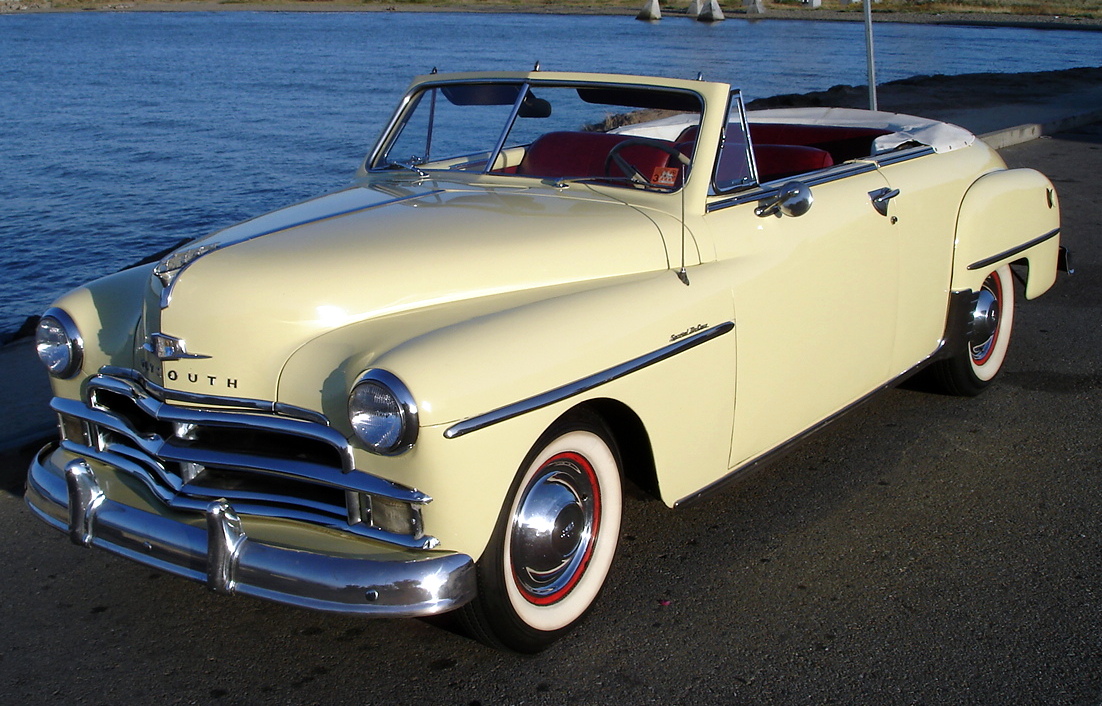
March was still “roaring like a lion” when I pointed my little yellow Plymouth convertible west. I opted to take the southern route, rather than fight my way through the Rocky Mountains.
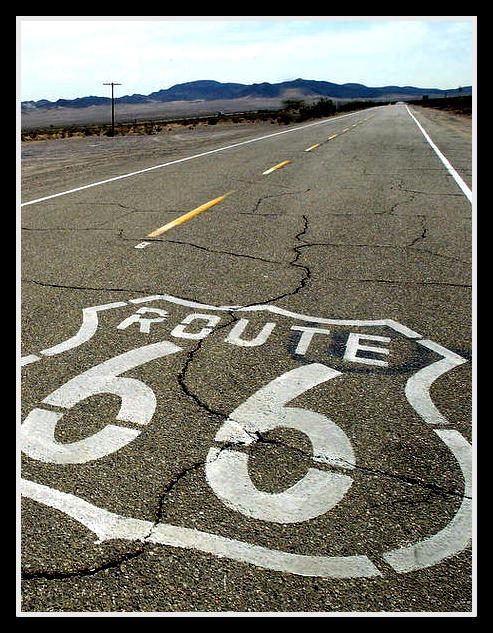 Apart from a flat tire on Route 66 outside of Flagstaff, it was an easy drive at least until I got to the Los Angeles suburbs. There were no freeways in those days. Route 66 turned into Foothill Blvd and I lost my way winding through little towns with funny names like Azuza and Cucamonga that Bob Hope and Jack Benny joked about on their radio shows.
Apart from a flat tire on Route 66 outside of Flagstaff, it was an easy drive at least until I got to the Los Angeles suburbs. There were no freeways in those days. Route 66 turned into Foothill Blvd and I lost my way winding through little towns with funny names like Azuza and Cucamonga that Bob Hope and Jack Benny joked about on their radio shows.
My destination was Hoffman Street in Studio City, where lived my cousin Hershel Gruenberg. Hoffman Street is one block long and impossible to find without help from a local. Hershel lived a few hundred yards from the entrance to Republic Pictures. He had a job at the studio and lived in one of those famous little “Hollywood Courts”.
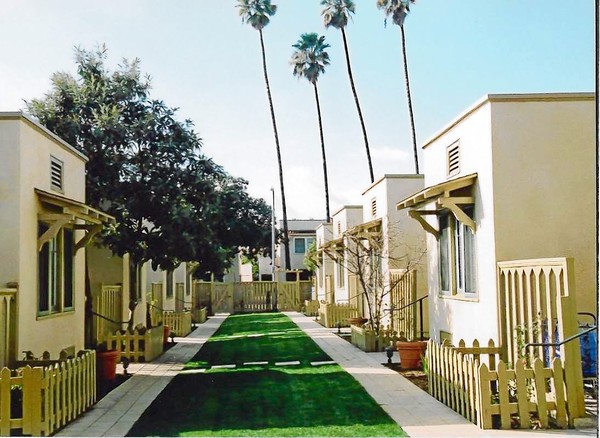
Let me digress and describe a “Hollywood Court”. Picture one long concrete walk separating two facing wings, each containing six one-room units which they called “singles”. Like the rest, Hershel’s unit had a small kitchen, a bathroom and a closet. The bed took up three-quarters of his combination living/bedroom. I spent the first week of my California life sleeping on a cot at the foot of Hershel’s bed.
I really want to save cousin Hershel’s story for another blog. He was a remarkable man, having survived polio, and though permanently crippled, made an amazing life for himself. We will re-visit Hershel.

As a recently discharged GI, I didn’t have much in the way of a wardrobe to pack. I figured that, based on most of the movies I’d seen, people in Los Angeles all wore flowered sport shirts and two-tone shoes. I did, however, buy a new suit, a broad shouldered light beige wool, like Robert Mitchum wore in “Out of the Past” with Jane Greer.
I was scheduled to report for work the day following my arrival. I put on my new suit, dress shirt and tie. Hershel gave me directions, sending me over the mountains via Laurel Canyon Road to Sunset Blvd and on to Beverly Hills. I was familiar with the names of some of those famous towns and streets in the LA area thanks to Raymond Chandler and his Phillip Marlow detective novels.
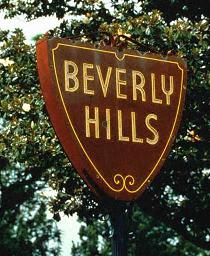
Hershel’s little hand-drawn map directed me west on Sunset Blvd. and south on Beverly Drive into downtown Beverly Hills. I had the top down on my Plymouth, just like Mickey Rooney and Judy Garland in the Andy Hardy movies. My destination was 355 North Beverly Drive upstairs of a small lingerie shop called the Beautiful Web. I put a nickel in the parking meter, climbed up the stairs and began the first big chapter in my California adventure.

There was one door at the top of the stairs. “Harriscope” was the name posted on that door’s mottled glass window. I was sure I had screwed up. I was instructed to report to the West Coast office of Weiss and Geller Advertising. I turned to go back down the stairs when I literally stumbled into a massive human being with a crushed nose on an enormous head. “Hey hey,” said that head. “Where are you going?” I started to tell my story right there on the landing, but the big fellow interrupted. “Let’s go in and talk to Burt or Connie. They know their way around Beverly Hills. I just come here for my checks.”
“Abe” said the young lady behind the desk, “I have a check for you.”
“You got one for my buddy?” he joked, moving his giant frame so I could be seen behind him in the doorway.
“I’m sorry Miss, I think I’m lost” was my opener. “I’m new to Los Angeles and supposed to report for work at a new job this morning. I’m looking for Weiss and Geller Advertising.”
Meanwhile, another office door opened and a man in a bow tie emerged who would play an important role in my life for the next fifty years. “Hi Abe” he said, “Connie’s got a check for you. And then turning to me, “I’ll bet you’re Don’s cousin from Minneapolis.”
“Yes” I said, “I’m Geoffrey Nathanson. I’m supposed to report for work at this address. Is Weiss and Geller in this building?”
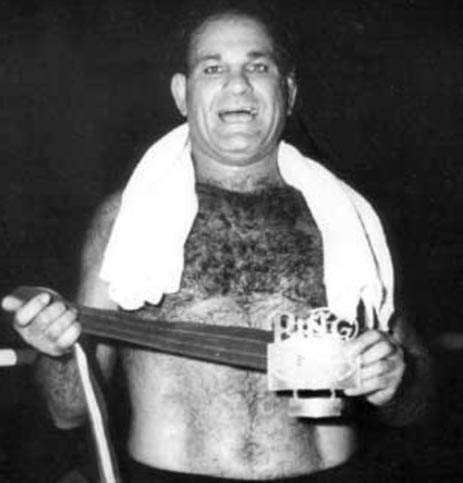
“Hi Geoff” he said, “I’m Burt Harris. Geoff, meet Connie Coleman. And this…” pointing to my new very big buddy “is Abe ‘King Kong’ Kashi, the heavyweight wrestling champion of the world.”
“Well, maybe one of them” said King Kong, modestly reaching out and swallowing my hand in his.
“Yes,” I replied. “I’ve seen you on TV, and I also saw you in person wrestling Georgeous George in the Minneapolis Auditorium. You were the bad guy.”
“Minneapolis is a good wrestling town” said Abe. “They love to hate me there. You got a pretty good college boy coming up, name’s Vern Gagne, played football I think; won the college title last year. He’s a good looking kid; the fans will love to see me beat him up.”
“Listen Burt,” he said turning away “I’ve got to run. By the way, somebody said he saw one of my TV bouts in Guam of all places.”
“Hey,” Burt replied “if they ever put a television station on the moon, you’ll be there Abe, at least on film.” Connie handed Abe a check. He waved at Burt, swallowed my hand again and lumbered back down the narrow stairway to Beverly Drive.
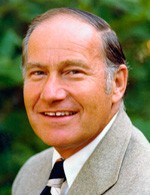
“Welcome to California,” said Burt. “You know we’re almost related; your cousin Rosetta is married to my cousin Irving Harris, and Don Nathanson, the guy you’re going to work for, and Irving are my partners in Harriscope.
“Maxine and Wally,” continued Burt, “have a breakfast meeting but should be back any minute now. Meanwhile, you met Connie, my secretary; let me take you in to meet Harry our editor.”
By now I was getting a feel for the layout of Harriscope. It consisted of two mid-sized offices on either side of Connie’s reception and a small room adjacent to Burt’s office where 16 millimeter films were being cleaned and spliced by Harry Gross, Burt’s editor.
Maxine Anderson and Wally Hiller, my bosses, arrived a few minutes later. Burt introduced me as Don’s cousin Geoffrey, their new “associate”. ‘Not quite “associate”, I thought to myself. ‘More like “trainee”. And “trainee” was exactly how I was perceived by my two new “associates”, who I sensed were not terribly happy to see me. But then again I was the boss’s cousin.
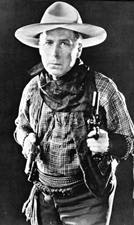
On the other hand Wally and Maxine were real professionals. Wally was from Chicago and had worked for Toni, Don’s biggest client. Maxine was a Hollywood veteran. In fact, her father, Bronco Billy Anderson was a western movie star of the silent screen who had owned his own studio in the early days of film. They occupied the third office which had two desks. “Don’t worry,” said Burt, “you can always use the extra desk in the reception area, and Connie only works three mornings a week. I discovered later that the agency’s office was rented on weekdays after 5:00 to a couple of TV comedy writers.
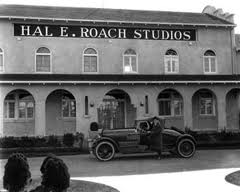
“We don’t spend a lot of time in the office,” he said turning to me. You’re going to be commuting back and forth between Hollywood and the studios most days. We cover a lot of LA in this job. I hope you are ready to get started. We will have to get formally acquainted on the fly. We’re auditioning twins at Hal Roach Studios for a new Toni Home Permanent commercial in about 30 minutes.”
Like MGM (Metro Goldwyn Mayer), the Roach lot was located on Washington Blvd. in Culver City. Unlike its famous neighbor it was less than imposing. Hal Roach however, introduced some of the screen’s great comedians of the 1920s and thirties including Laurel and Hardy, the Our Gang Kids, Harold Lloyd and the Topper movies with Cary Grant and Constance Bennett.

However, the studio had long since stopped making movies and was now renting space for TV series and commercial production. I, of course, didn’t know the difference. There was still a wall around the lot, a classic entrance gate, fake street scenes, sound stages and actors in make-up. I had arrived in “Hollywood”.
I followed Wally and Maxine into one of the office buildings and a room set up for auditions. There was a table with two chairs on one side and, nothing else except the kind of special lighting you might see on a theatrical stage. Another chair was brought in, and I joined my two bosses behind the table. Each of us were given pencils and yellow pads so we could make notes.
At Wally’s request the first set of twins were ushered in. There was some get-acquainted conversation. The girls were asked to turn around, sit down, walk up and back and rotate their heads so as to swing their hair. Maxine asked the girls to come over so she could inspect their hair closely. She asked, “Was their hair straight or naturally curly? Do they get permanent waves at beauty parlors? Have they ever tried Toni or some other home permanent?”
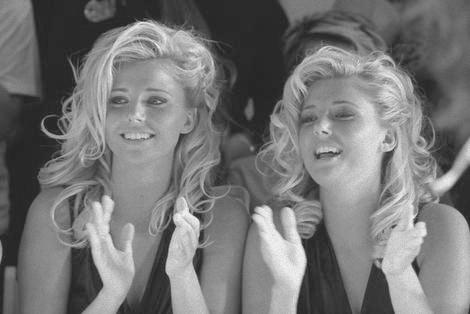
The girls were all beautiful. I think we interviewed five or six pairs of twins that day. Most were blondes but there was a pair of brunette sisters and a couple of red-heads. To use a twenty-first century expression; “I was blown away”. I couldn’t believe that I was where I was and getting paid to sit behind a desk and spend an afternoon auditioning beautiful women. My ‘associates’ were busy making notes. The notes on my yellow pad were names, quick descriptions and my own code for rating the girls for personal follow-up. I’m sure Wally and Maxine’s notes dealt with their qualifications for the job.
I got to know a little more about my bosses that day. Wally was around thirty-six and married with four children. His family lived in Brentwood near Riviera Country Club. Maxine, who was approaching sixty, had never been married and lived in a modest home in Beverly Hills with her long-time “housekeeper”.
I would guess that the twins’ ages ranged from eighteen to twenty-six. Several of them lived at the Studio Club; a dormitory-like apartment building for young women in Hollywood. Others lived in various apartments in the general area. Some had been recruited by the studios and were attending acting and/or modeling schools. All of the girls were either members of or were applying for membership in one or both of the movie and TV unions.
To earn a living most of these would-be starlets had some kind of evening job, like waitressing or drive-in-car-hopping. A few were members of the Screen Extras Guild. I’m sure that some of the models I met that first year may have been married or perhaps husband-hunting. But even with those girls, it was all about a career in “The Business”. That goal came first.
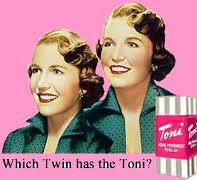
There were three more audition sessions that week, but none of the girls we interviewed were hired. A pair of twins in New York or Chicago made the cut. On the other hand, I met some very attractive young women, several of whom were delighted to show me the town. Someone somewhere had advised aspiring young starlets that it was important to be seen in public at the “right places”. The best places to be seen, of course, were wherever the stars hung out. That meant the clubs on the strip and the popular restaurants. Was I the right date for those would-be starlets at a salary of $50 a week? Hardly. Though I had saved about $2,000 when Uncle Sam was paying my bills, those beautiful young things wined and dined away my life savings in less than six months. I loved them all, but the party was over.
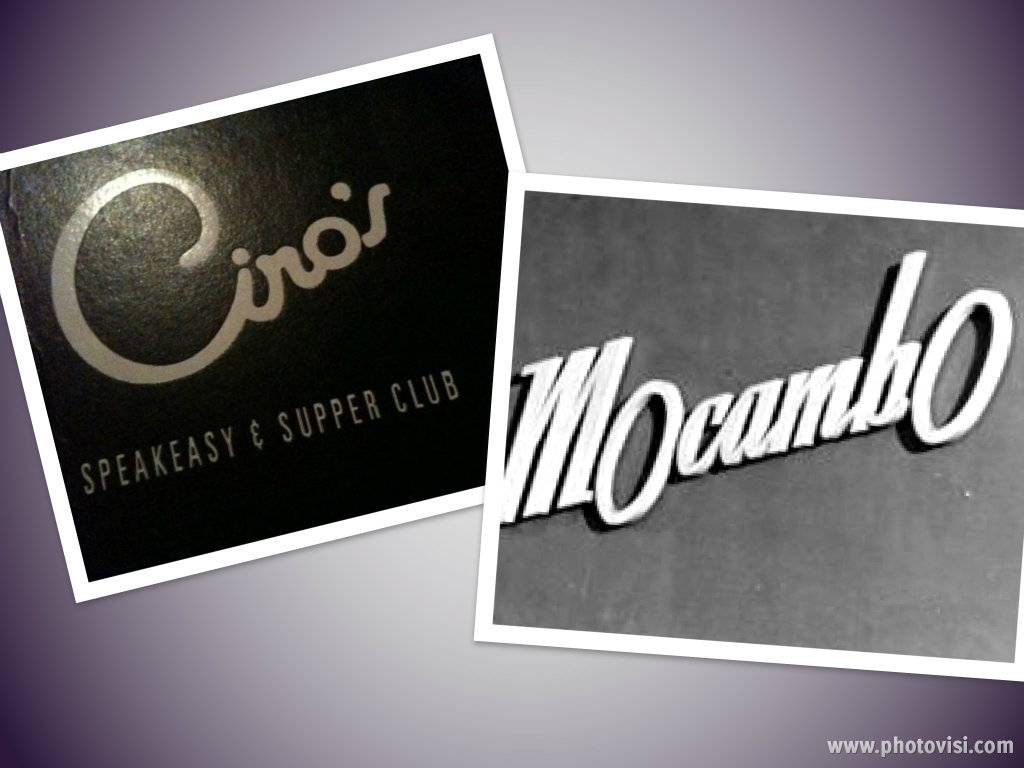
“Don’t you think it’s time you met a nice Jewish girl?” wrote my mother.
“Sure mom,” I wrote back, “but Jewish girls like to eat too.” This was just the way things were in Hollywood or Beverly Hills or anywhere West of LaBrea.
Never one to accept that kind of answer, my mother finagled a way to get me invited to a big party in Beverly Hills where I met the girl who would eventually ease me out of my Hollywood fantasy. We’ll save that adventure for another blog.
Maxine Anderson took me by the hand and introduced me to the world of network radio and television and the roles of the sponsors and their advertising agencies. Our agency’s bread-and-butter client, The Toni Company, sponsored a host of radio soap operas and half-hour comedies. In addition, Toni co-sponsored TV game shows and audience participation programs.
This was back in 1954 when most radio or TV programs were owned or controlled by one or two sponsors. Today, on the other hand, the broadcast networks own or control their programs and sell commercial time in those shows to multiple advertisers. During my early years with the agency in Los Angeles, Toni co-sponsored such radio shows as “One Man’s Family”, “Our Miss Brooks”, “Meet Corliss Archer” and “Peter Potter’s Juke Jury”. I also represented our client in the production of TV shows such as “You Bet Your Life” with Groucho Marx, “The Red Skelton Show”, “Truth or Consequences” with Ralph Edwards, “House Party” with Art Linkletter, “Queen for a Day” with Jack Baily, “The Tennessee Ernie Ford Show” and several others.
All the TV programs were produced in black and white. It would be another 10 years before the networks began telecasting in color. Even then less than half of the American families owned color TV sets. It wasn’t until the fall season of 1972 that the type of shows I had worked on back in the 50s began telecasting in color.
What was my actual job? What did I do to earn my $50 a week? Well… it seems that the agency had entrusted me to look after our client’s interests, which was to make sure the talent or the announcers read our commercials without screwing up. In those days before video tape, most TV audience participation shows were broadcast live. If the announcer missed a line in a commercial or a director or cameraman screwed up a shot, it was thousands of dollars blown in just a few seconds. With video tape, which came along in a few years, a show could be recorded and those “screw ups” which were called bloopers could be edited out for replay later. In my days what was televised live in Los Angeles was what eastern America got.
The best example of a blooper on a Toni-sponsored TV program on which I worked occurred during an infamous Red Skelton show that was broadcast live on CBS from Television City in Hollywood. Red was one of the best ad-libbers in the business. To enjoy one of the classic TV show bloopers of the 50s… Be my guest… Press the play arrow.
With Maxine and Wally making commercials and whatever else they did to keep busy, those network broadcast responsibilities were turned over to a 24-year-old amateur who didn’t know a fade from a dissolve, but I loved being a part of it. Sure there were guys making $50,000 doing for their clients what I did for Toni, but then again there I was in show business on the leading edge of national media. And to think… none of the stars and none of those other ad guys in the control booth knew I was getting paid only fifty bucks a week.
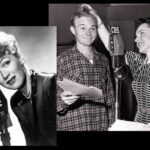
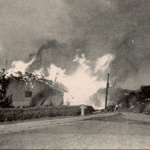

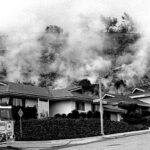
5 Responses
In London, Geoff brought back some early memories of my dad and Burt. I really enjoyed this picture of Mad Men history. Cousin Marc
Loved the set up of meeting Burt for the first time. And thanks for sharing Red Skelton!
Geoff: I’m leaving for a trip to China tomorrow and just read this blog. God, how my dad loved Red
Skelton. Now I know how you got started and why Burt Harris was so important for you and your career.
Cousin Emily
You’re writing creates wonderful visual images. This time must have felt like magic. By the way I’m Sheila, Jen’s mother in law who you took to lunch a couple of years ago. I’m loving your blog.
Thank you Sheila. Unfortunately the damn bug is keeping our beautiful Jen at a distance.